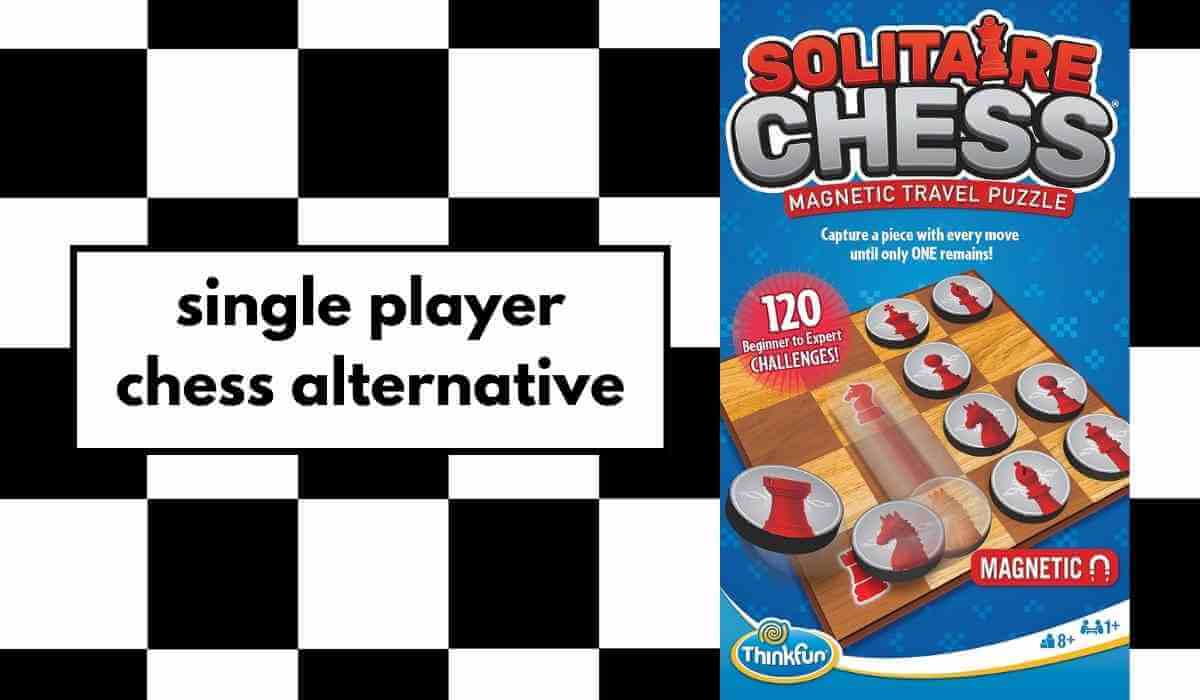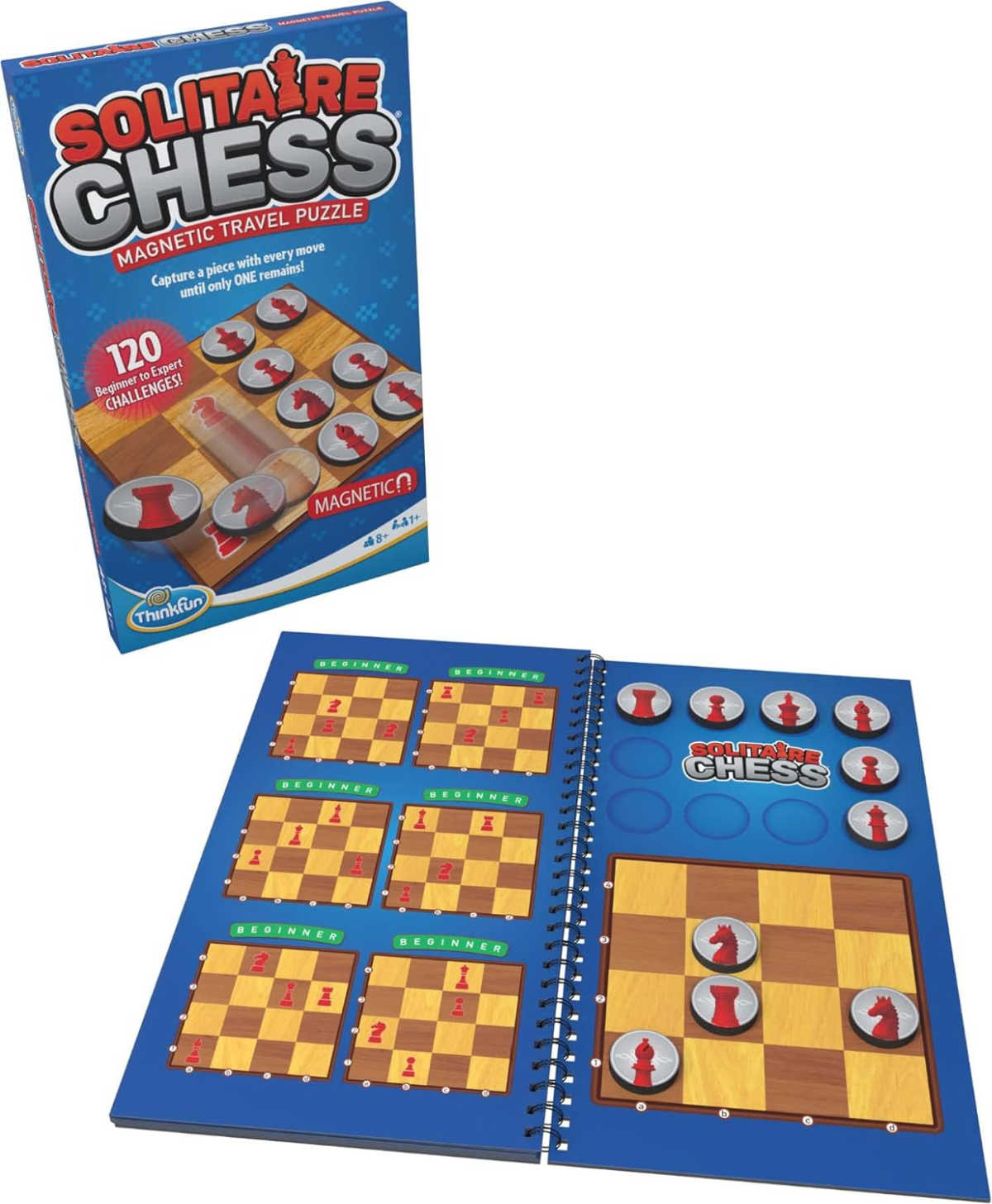Solitaire Chess is a travel-friendly strategic logic game that introduces kids to the basics of how chess pieces move.

Learning how to play chess is a great brain workout. And lots of parents want their kids to learn basic chess skills to give those young brains a boost.
But first...
I have a confession.
I hate chess.
This may be a little surprising seeing as how much I love playing games with my kids.
But chess? Na-uh. So tedious.
However...
My kids LOVE chess and I grudgingly acknowledge learning chess skills has many benefits.
My older son won't play chess with me because he "wants to be challenged." True, it's hard to play chess with someone who doesn't have a strategy (or even cares about having one).
My younger son wants to learn basic chess skills and likes to play chess, but he can't play with his brother because he is whalloped every time and then has a meltdown.
However!
I have now acquired the perfect alternative to chess!
MORE: How to help a sore loser develop good sportsmanship
(Note: this post contains affiliate links that earn from qualifying purchases.)

Solitaire Chess: Magnetic Travel Puzzle
Solitaire Chess is (as the name implies) a single player logic puzzle. It will be enjoyed by chess players, chess learners and even kids who don't really know anything about chess! It's also a great game to take on a road trip along with our other favorite travel games.
How to Play
This single player logic game consists of a spiral bound challenge booklet with a 4 x 4 chess board, 10 magnetic chess piece tokens, and an instruction manual. Challenge maps come in 4 levels, ranging from beginner to expert.
To play the player choses a challenge map, places the chess pieces in the proper locations as indicated by the map.
The goal is to move the chess pieces off the board, until only one piece left at the end. The player must move the pieces according to normal chess movement rules. For example, bishops move diagonally, rooks move in straight lines, etc. Each move must result in a capture.
MORE: Best single player logic games for kids
How Solitaire Chess helps kids to learn basic chess skills
- Solitaire Chess is challenging because the player must think through the entire puzzle sequence before he starts moving the pieces. The instruction booklet provides hints for each challenge map, if kids get frustrated!
Children can practice typical chess moves without the added stress of competition.
- When thinking through sequences, the player must continue to re-evaluate the result of each move in order to determine a successful strategy to solve the puzzle.
The manufacturer recommends Solitaire Chess for ages 8 and up. Of course many children under 8 can already play chess, so use your judgement!
Solitaire Chess was a 2011 Toy of the Year, a Parent's Choice Gold Medal recipient, and received the Creative Child Magazine Preferred Choice Award.
The second game you will enjoy is Laser Chess. Laser Chess is a Mensa Select winner and won a National Parenting Product Award.
Maybe I will even learn basic chess skills and learn to love chess.
Dare to dream.
But in the meantime I have a substitute that my kids can play without me!
More great games to try:
- Cat Crimes (a single player logic game)
- The best non-board games for families
- Code Master (learn coding skills offline)
- Watermelon chess! (traditional abstract strategy game)



Holly says
We got a game called "No Stress Chess" for our 5 year old. It's leveled to help learn the game. I never played before so when he wanted to try, I was apprehensive. No Stress Chess was awesome!
Erica says
I've not heard of that! Thanks for the suggestion.
JULIA BATES says
I got No Stress Chess for my grandson and we've played together. I know next to nothing about chess. So we're evenly matched!
Erica says
Sounds like fun!